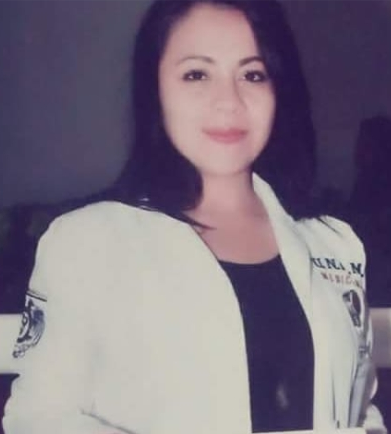The alarm clock goes off. It's 5 o’clock in the morning again.
I'm late for the hospital. It's a cold morning. I do not want to get up. The alarm clock goes off again. It's 5:15. I must jump out of the bed and take a shower. My concentration focuses on getting there on time.
As I head quickly to the entry of the hospital, I manage to put on my lab coat with one swift movement so that no one notices that I have arrived very late. I throw my backpack on the dirty floor in the service room in the emergency area, filled with patients like every other day. I prepare myself to speak to Dr. Fonseca.
A pungent smell permeates the environment, the combination of alcohol, disinfectant, coffee, urine, blood, and medicines. Voices, murmurs, and crying surround me along with stoic nurses administering medicines and providing sponge baths to the patients from the previous day.
I trot along the corridor until I get to the first floor to pick up the laboratory results. I review them thoroughly. Everything is in order. When I return, I notice in the distance a red light and a noise that captures the attention of me and the people around me.
It's a patient monitor. I remain motionless for a second. Surrounding me are infirmary personnel. I don't see any certified doctors or colleagues.
I watch the nurse introduce a probe into the patient's mouth and suction to remove secretions. For a moment, it seems that time has stopped.
My heart begins to race. My hands are sweating. I walk through the corridors once again, hoping to find a doctor. There is already no time. It feels like a slow motion scene. I pull out an oximeter from my lab coat and place it on the index finger of the patient, marking 72%. He is undersaturated.
The nurse suctions for the second time, and suddenly the cannula comes out of his mouth. He is aspirating and it has to be intubated again. Everything continues in slow-motion.
I am nervous. While they are bringing the code cart, I quickly hold the drawstrings of the face mask and put it on myself. The nurse helps me put on gloves. I position myself on the head of the bed and place the patient's head backwards. The nurse grabs a laryngoscope from the cart, and I extend my hand to receive it. I place it in the right commissure. I am feeling a strange swing between safety and fear. While I am introducing the instrument I can see the patient's vocal cords.
Suddenly I hear a voice. It's the doctor, and with her arrival there is a sense of inexplicable relief. She stands next to me and guides me through the procedure. The patient is intubated at last. I check the lungs and then the stomach. I turn my head a little to observe his hand. The oximeter shows 93%.
For a moment, calmness comes to the room. I inhale deeply, and exhale a sigh of relief.
Not even three minutes passes when the doctor exclaims: “The patient has entered shock!”
Without doubting it, I rise, get on the stool, and begin thoracic compressions: one, two, three, four, five, six. After three CPR cycles, the weariness and the sweat begin sprouting from my forehead and I feel the loss of strength in my arms. I am looking around me for help, thinking to myself, “Where are my colleagues?”
I observe his face. He is 57 years old. Short, chestnut-colored hair; a mustache. He wears an expression of grief. I remember thinking that he likely has a spouse, children, and perhaps grandchildren. He is the love of someone's life. We keep on giving thoracic compressions.
I feel a horrible chill that runs through my arms, thorax, and jaw. From one minute to another, strength fills my body, the same that could be reflected on the given compressions.
“Administer adrenaline,” the doctor says with a firm voice. The nurse grabs an injectable bottle from the code cart, administering it through his IV. I continue giving compressions. I hear voices coming from behind, and there are two of my colleges approaching to help. “Switch,” I hear a voice from behind say. I get off the stool, breathe deeply, and see a lot of people around me.
The doctor signals me, and I approach her. She tells me to go to the waiting room, and to speak with the family of the patient.
I run out, and when I get to the waiting room, I see faces filled with anguish. I say aloud the name of the patient. A person raises her hand. We both walk to each other. She answers me by saying she is his wife. I feel my gullet close for a moment. I swallow and inhale deeply.
“Your husband has just entered cardiac shock. The possibility of survival is very low.” She takes me by the shoulders and says, “Let me see him.” Her eyes begin to fill with tears. Her face is full of fear mixed with sadness. She wipes the tears from her cheeks.
I walk toward the glass door that separates the rooms. Upon crossing it, I run again to where the 57-year-old man is. The monitor shows ventricular tachycardia activity; I hear “load 200 joules.”
I am powerlessness to do anything. The minutes are eternal. It is like watching at a scene on television. I remain by his side while others go to tend to other patients. I remember that when I arrived, he was in his bed in the observation room.
I look at clock. It is 6:30 in the morning.

Sauza Quebrado Sharon, Médico Pasante de Servicio Social
Universidad Nacional Autónoma de México, Facultad de Medicina
Ciudad de México
Back to the June 2018 issue of ACP IMpact

